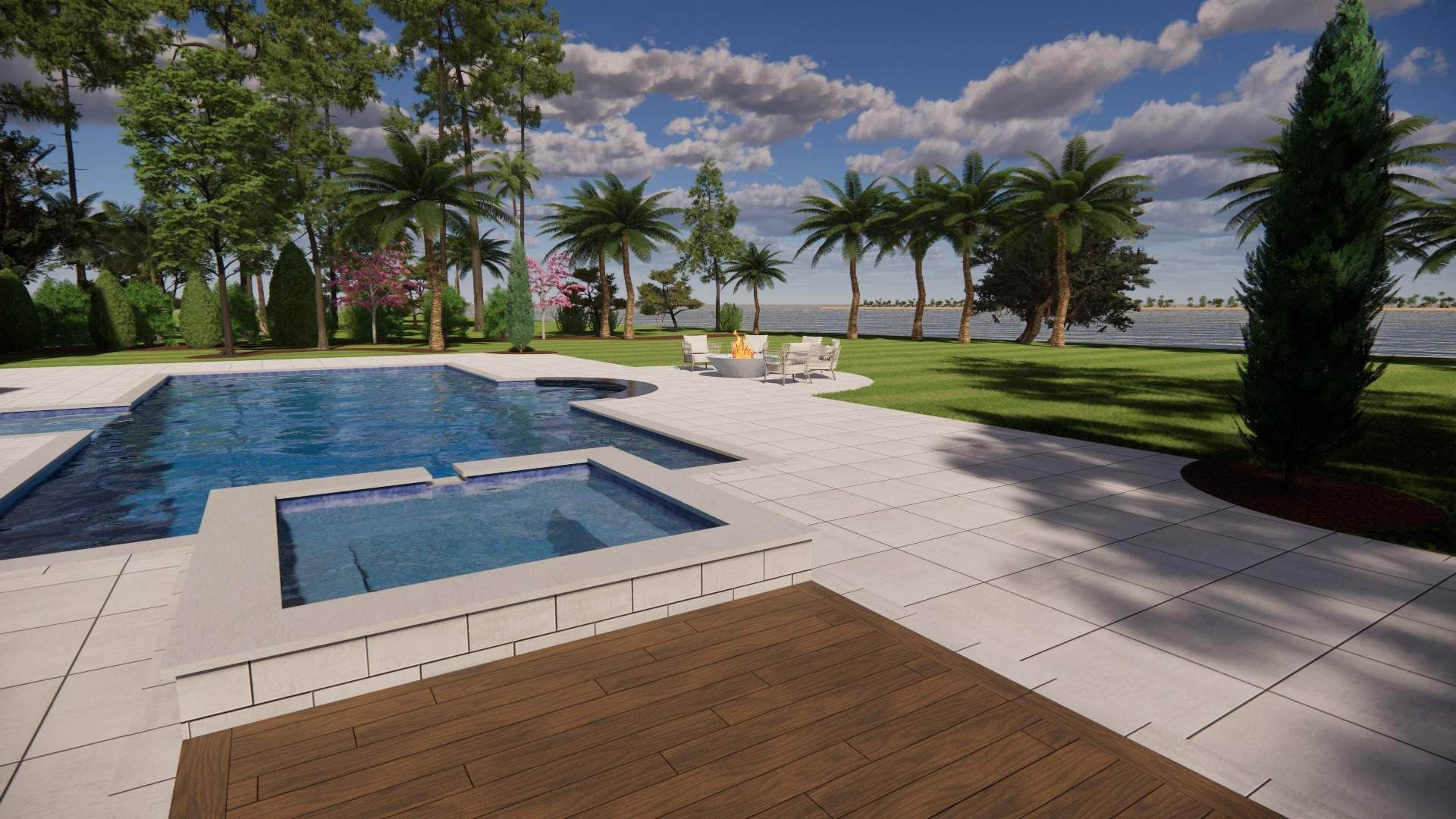Rainwater Harvesting Solutions for Hilton Head Homes
This is a subtitle for your new post

Rainwater Harvesting Solutions for Hilton Head Homes
Rainwater harvesting helps homeowners collect and use rainwater. This method can save water and money. For those living in Hilton Head, having a smart system in place is key. This article will guide you through simple solutions for rainwater harvesting that can work well in your home or business.
Key Takeaways
- Rainwater harvesting saves water and money.
- Systems can be simple or complex, depending on your needs.
- Local plants help improve the landscape.
- Professional help can make installations easier.
- Regular maintenance is important for best results.
[Explore irrigation system repairs for maintaining your landscape efficiently.]
Understanding Rainwater Harvesting in Hilton Head
Rainwater harvesting is the process of collecting rainwater from rooftops or surfaces. This water can be stored and used later. In Hilton Head, where summer rains can be heavy, harnessing this resource is smart. Homes and businesses can use this water for irrigation, toilet flushing, and other non-potable uses.
Benefits of Rainwater Harvesting
- Reduces water bills: Using collected rainwater lowers the amount of city water you need.
- Helps the environment: It reduces stormwater runoff which can cause flooding and erosion.
- Provides a backup source: In case of drought, harvested rainwater can be a valuable resource.
- Supports local gardens: Using rainwater can improve plant growth and health.
Benefit Description Impact on Homeowner Cost Savings Reduces reliance on municipal water supplies Decreased water bills Environmental Protection Minimizes stormwater runoff and erosion Healthier landscapes Drought Resilience Provides an alternative water source during dry spells Enhanced water security Improved Plant Health Using natural rainwater boosts plant growth Vibrant gardens Designing an Integrated Rainwater Harvesting System
Creating a rainwater system can be easy. Here is how you can design one that meets your needs.
Assessing Your Property's Potential
First, look at your roof. A larger roof collects more water. Check if your home is in a place where rainwater flows easily. The more you can collect, the better.
Choosing the Right Storage Solutions
Next, you need a storage tank. Tanks come in many sizes. You can choose a tank that fits your yard. Some options include: - Above-ground tanks: Easy to install and monitor. - Underground tanks: Save space and keep water cooler.
Integrating with Existing Irrigation Systems
If you have a garden, link your rainwater system to your irrigation. This can help your plants get the water they need without using city water.
Implementation Strategies for Hilton Head Properties
Once you have a plan, it is time to put it into action. Here are steps to take.
Professional Installation vs. DIY Approaches
You can install a rainwater system by yourself. However, hiring a professional can save you time and ensure the job is done right. Local companies can help you set up your system.
Navigating Local Regulations and Permits
Before starting, check local rules. Some areas may have specific laws about rainwater harvesting. Make sure you follow all guidelines to avoid problems.
Seasonal Considerations for System Management
Hilton Head's climate has wet and dry seasons. Adjust your system based on the weather. For instance, during heavy rain, your tank may fill quickly. In dry months, you may rely more on stored water.
Automated Irrigation Control Systems
Consider using smart technology. These systems can help you manage how much water you use. They can adjust based on rainfall, which saves more water.
Remember to assess your water needs and select appropriate storage options to ensure you are making the most of your rainwater collection system. Consider factors like: - Average annual rainfall in your area. - Size of your roof and potential collection area. - Usage for collected water (e.g., irrigation, non-potable uses). - Available space for storage tanks (above-ground vs. underground).
Maximizing Efficiency Through Smart Technology
Smart technology can enhance your rainwater system. Here are ways to improve efficiency.
Real-time Monitoring and Maintenance Alerts
Some systems have alerts that let you know when your tank is full or needs cleaning. This helps you keep everything running smoothly.
Initial Setup Costs vs. Long-term Savings
Setting up a rainwater harvesting system may cost money upfront. However, you'll save over time on your water bill. This makes it a smart long-term investment.
Cost Factor Description Estimated Cost Range System Installation Professional setup for storage and plumbing $1,000 - $5,000 Storage Tank Cost of tanks based on size and type $200 - $3,000 Maintenance Regular cleaning and upkeep $100 - $300 annually Smart Technology Automated systems for efficiency $200 - $800 Cost Considerations and Return on Investment
When planning your rainwater system, think about costs.
Potential Rebates and Incentives
Some local governments offer rebates for water-saving systems. Check if you qualify. This can help reduce initial costs.
Understanding Your Water Needs
Estimate how much water you need. This will help you choose the right size tank and system.
Environmental Impact and Sustainability
Rainwater harvesting helps the environment. Here are some key points.
Reducing Pressure on Local Water Resources
Using rainwater means less reliance on city water. This is crucial for Hilton Head, where water use can be high.
Minimizing Stormwater Runoff and Erosion
Collecting rainwater can prevent flooding and soil loss. This helps keep the landscape healthy.
Maintenance and Upkeep of Integrated Systems
A rainwater system needs care. Here are tips for maintaining it.
Regular Inspection and Cleaning Routines
Check your system often. Clean gutters and filters to ensure water flows freely. This prevents clogs and keeps your water clean.
Addressing Common Issues in Coastal Environments
Hilton Head's coastal climate can be tough. Saltwater can affect your system. Make sure to use materials that withstand this environment.
Integrating Rainwater Harvesting with Other Sustainable Practices
You can make your property even greener. Here are some ideas.
Choosing Native Plants
Using local plants in your garden can help with water usage. Native plants require less care and are better suited for the local climate.
Composting and Mulching
Adding compost and mulch helps keep soil moist. This reduces the need to water, making your system even more effective.
The Role of Professional Landscapers in Rainwater Harvesting Integration
When setting up your system, consider getting help from a professional landscaper.
Expert Design and Installation Services
Professionals know what works best in Hilton Head. They can design a system tailored to your needs. This ensures you get the most from your investment.
Ongoing Maintenance and System Optimization
After installation, a professional can help with routine checks. This keeps everything running well and maximizes your water savings.
[Learn more about how to enhance your gardening with sustainable landscaping practices.]
Future Trends in Rainwater Harvesting for Landscaping
The future looks bright for rainwater harvesting. Here are some trends to watch.
Emerging Technologies and Innovations
New tools can make rainwater harvesting easier. Look for developments that can help you save more water.
Community Workshops and Demonstration Projects
Local groups may offer classes on how to set up rainwater systems. Participating can help you learn more and meet others interested in sustainable practices.
Education and Outreach: Promoting Rainwater Harvesting in Hilton Head
Getting the word out is important.
Collaborating with Local Schools and Organizations
Working with schools can teach kids about water conservation. Projects can inspire the next generation to think about their water use.
Addressing Space Limitations in Urban Settings
In crowded areas, you can still harvest rainwater. Use vertical gardens or rooftop systems to make the most of limited space.
Ensuring Water Quality for Various Uses
It's vital to keep your rainwater clean.
Regular Inspection for Contaminants
Once your system is in place, check the water quality. Make sure it is safe for your intended uses.
Saltwater-Resistant Components
If you live close to the coast, use materials that resist salt. This helps your system last longer and work better.
Creating a Holistic Eco-friendly Landscape Design
Combine rainwater harvesting with eco-friendly designs.
Custom Pergola Design and Build
Add a pergola to your yard. It can provide shade and collect rainwater for your garden.
Outdoor Kitchen Structures
An outdoor kitchen can use rainwater for cooking or cleaning. This adds convenience and saves water.
Drip Irrigation for Gardens: Hilton Head's Water Saver
Consider using drip irrigation. This method delivers water directly to plants, using less overall water.
Water-efficient Sprinkler Systems: Save Money & Lawns
Installing efficient sprinklers can reduce water waste. Look for models that adjust based on rainfall.
Irrigation System Repairs: Hilton Head's Lawn Savior
If your system has issues, get repairs done quickly. This ensures your plants get the water they need.
Saltwater-Resistant Irrigation Components: Coastal Oasis
Use irrigation parts that resist saltwater. This is important in coastal areas like Hilton Head.
Saltwater-Resistant Water Features: Coastal Elegance
Adding water features can enhance your yard. Ensure they are made from materials that resist salt. This keeps them looking good and functional.
Conclusion
Rainwater harvesting offers many benefits for Hilton Head residents. With careful planning, you can create an effective system that saves water and money. By working with local experts and focusing on maintenance, your harvesting system can thrive. So, why wait? Start planning your rainwater harvesting solutions today and enjoy a more sustainable home.
[Discover ways to integrate stormwater management practices into your property.]

HOURS OF OPERATION:
- Mon - Fri
- -
- Sat - Sun
- Closed
All Rights Reserved | Hilton Head Landscapes | Website Created by: Kickstart Local

